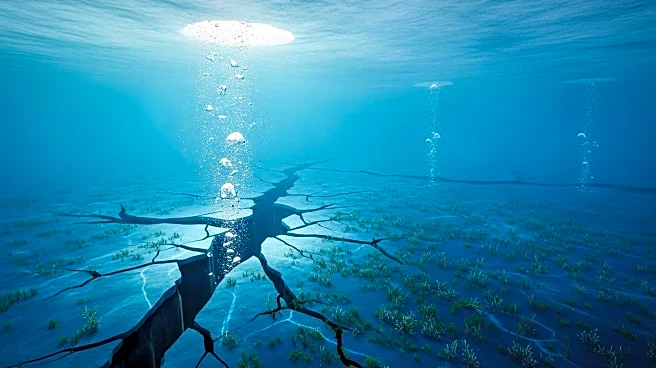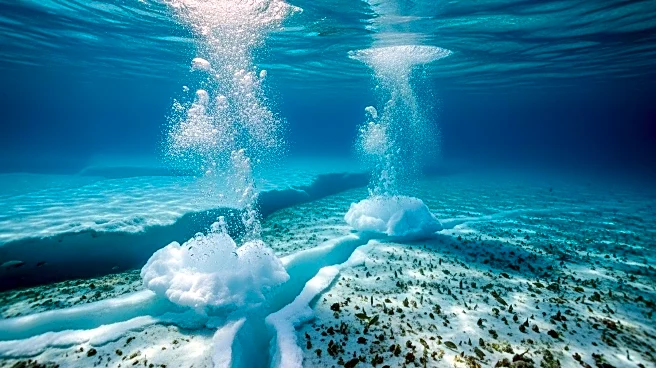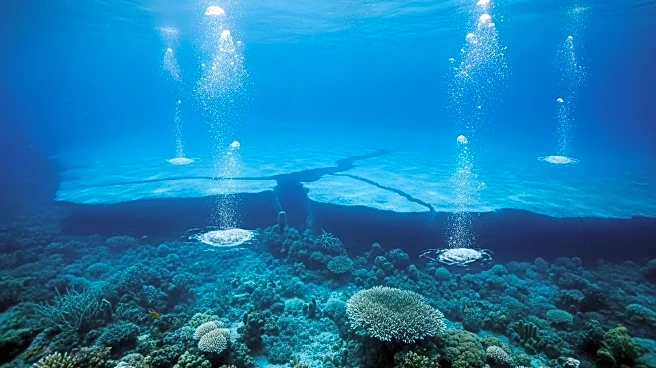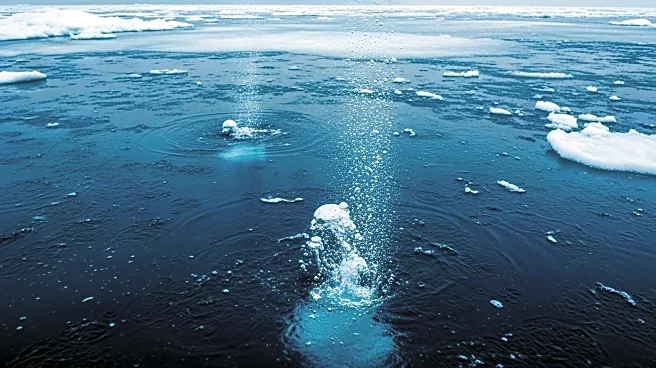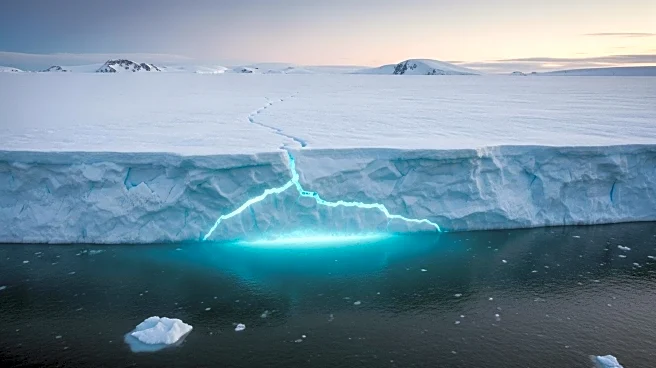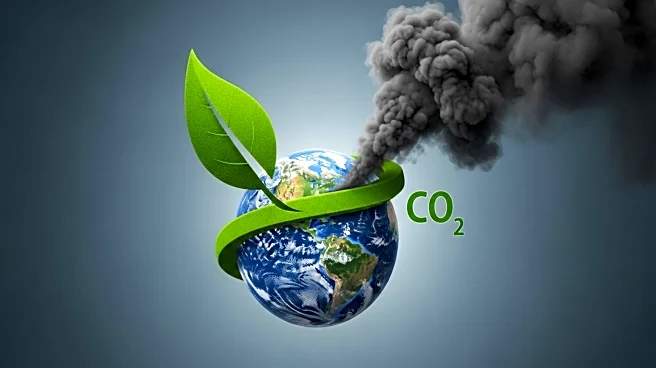What's Happening?
Researchers have discovered methane leaking from cracks in the Antarctic seabed, a phenomenon that could have significant implications for global warming. Methane, a potent greenhouse gas, is escaping from fissures in the seabed at a high rate as the region experiences unprecedented warming. The study, published in Nature Communications, highlights the widespread nature of these leaks in the Ross Sea area. Methane is responsible for a third of current anthropogenic global warming and is 25 times more potent than carbon dioxide.
Why It's Important?
The discovery of methane leaks in Antarctica is concerning due to the gas's impact on climate change. Methane emissions contribute significantly to global warming, and the release from seabed cracks could exacerbate climate change effects. Understanding the dynamics of methane release in polar regions is crucial for predicting future climate scenarios and developing mitigation strategies. The findings underscore the need for comprehensive climate research and policy measures to address greenhouse gas emissions.
What's Next?
Further research is needed to fully understand the role of methane emissions in Antarctica and their impact on global climate systems. Scientists may conduct additional studies to quantify the extent of methane release and explore potential mitigation strategies. The findings could influence international climate policy discussions, emphasizing the importance of addressing methane emissions in climate action plans.
Beyond the Headlines
The methane leaks in Antarctica highlight the complex interactions between climate change and polar ecosystems. As ice sheets and glaciers melt, the release of greenhouse gases from subsea reservoirs could have cascading effects on global climate patterns. The situation underscores the urgency of addressing climate change and investing in sustainable practices to protect vulnerable ecosystems.

